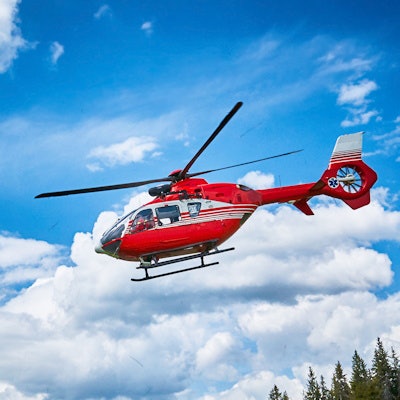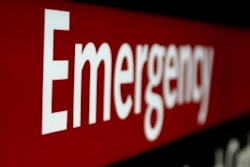
Putting a point-of-care ultrasound (POCUS) scanner aboard an emergency helicopter can help medical personnel triage trauma cases for patients in rural areas that are distant from tertiary care hospitals, according to a study by Canadian researchers presented at the recent meeting of the American College of Emergency Physicians (ACEP).
Because the largely rural landscape of Canada and its dispersed population makes it a challenge to rapidly respond to traumas that occur at long distances from tertiary centers, helicopter emergency medical services take action to manage these situations, explained Dr. Tom Jelic of the University of Manitoba in Winnipeg.
But it can be challenging for emergency medical personnel to make assessments in the helicopter using their clinical judgement, explained Jelic, who is point-of-care ultrasound lead for Shock Trauma Air Rescue Service (STARS) in Manitoba,
"With the vibrations of the helicopter, your ears are essentially useless," he said in an interview with AuntMinnie.com. "There is also glare that makes it difficult to do an appropriate physical examination. With the ultrasound machine, it can help you to determine if the patient has a collapsed lung or has blood in the chest or in the abdomen."
Moreover, in trauma medicine, quick, qualitative assessment of a patient is often needed to avoid grave outcomes like death, according to Jelic. To this end, air medical crew use focused assessment with sonography in trauma (FAST) and extended FAST (eFAST) exams to rapidly evaluate trauma patients. Information provided from POCUS is relayed to the tertiary center, where a trauma surgeon, for example, can prepare for surgery or another procedure, he said.
In their paper presented at ACEP 2020, Jelic and co-investigators sought to investigate the efficacy of POCUS performed on helicopters used for the STARS missions. They evaluated data on POCUS images, interpretations, and clinical integration over a two-year period and compared it with the gold standard -- CT or operative reports. They also looked at whether the use of POCUS delayed time at the scene.
A total of 231 patients were transported by helicopter and had an ultrasound performed while 1,016 were transported without an ultrasound performed. The mean scene time was no different for patients who underwent ultrasound compared with those who did not: 25.98 minutes (+/- 3.18, 95% CI) compared with 26.99 minutes (+/- 1.44, 95% CI), yielding a difference that was not significant (p < 0.1336).
The result translates to the fact that ultrasound performed by the air medical crew did not prolong the time they were at the scene according to Jelic.
The sensitivity and specificity numbers, denoting the accuracy of POCUS compared with CT or operative report findings, were 52.5 and 89.9, respectively, in the study.
"We have a pretty robust quality assurance program where the flight crew is required to store and save the images on the server," Jelic said. "I review the images and the interpretation of what [the air medical crew] thought the image showed."
Scans that were false positives or negatives did not adversely affect patient care or outcomes, Jelic added.
Extremely cold weather (-40 degrees Celsius [-40 degrees Fahrenheit] and below) can be a factor that limits the immediate use of POCUS in emergency situations, noted Dr. Jelic.
"We haven't had many experiences where we have had issues with it (POCUS)," he said. "When it's very cold, the screen can sometimes be slow to respond."



















